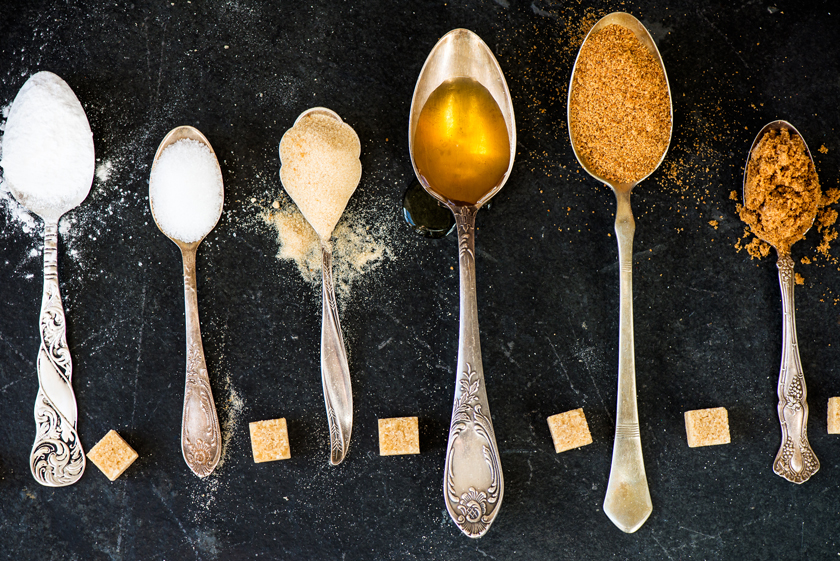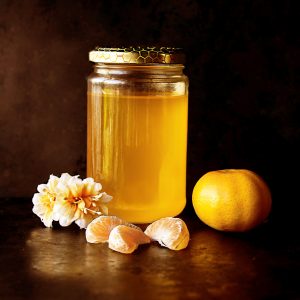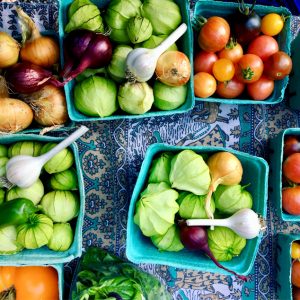Let’s talk about Sugar
Let’s talk about Sugar – What’s the recommendation?
The World Health Organisation recommend limiting ADDED/FREE sugar in our diets to less than 10% of our recommended daily energy intake, measured in calories or kilojoules.

What is added sugar, or free sugar?
This is any source of sugar used to sweeten foods in the dry or liquid form NOT sugars naturally occurring in whole fruits, vegetables and in unsweetened dairy food used in a product eg milk, cheese or natural yoghurt.
Added/free sugar will be on the label as:
- Sugar (any colour), anything ending in ‘ose’ eg. sucrose, fructose, dextrose, glucose, maltose, raffinose, xylose
- Syrups/liquids such as rice malt syrup, maple syrup, glucose syrup, high fructose corn syrup, golden syrup, molasses, agave and date syrup
- Honey and nectars such as agave syrup and rose hip syrup, coconut sugar and palm sugar, invert sugar
- Fruit juice concentrate/fruit puree
- Sugar alcohols (sweet carbohydrates that are found naturally or processed from other sugars) like sorbitol, mannitol, xylitol, erythritol
- Fruit juice (even 100%)
What is 10% of our energy needs?
This depends on age, gender, height and activity level for instance:
- For large and active adults – up to a maximum of 12 teaspoons added/free sugar per day eg. 1 sports drink (9 teaspoons) and one small fruit yoghurt tub (3-5 teaspoons).
- For smaller and less active adults – up to a maximum of 6 teaspoons added/free sugar per day eg. one small fruit yoghurt tub (3-5 teaspoons) and 1 teaspoon honey on porridge.
Should I use the Nutrition Information Panel (NIP) on the label to work this out?
The NIP shows total carbohydrate including itemised sugars in the product.
BUT ‘sugars’ in a product come from two sources:
- Added/free sugars eg. sugar, fruit concentrates, syrups.
- Sugars contributed by whole vegetables, whole fruit and milk or yoghurt ingredients.
The label does not indicate how much of each are present so is useless for working out added/free sugar content!
I suggest using this method:
- Look at the ingredient list on the product and see if there are ingredients that are just added/free sugar and then go to 2) NO or 3) YES
- NO – the product has no added/free sugar in it, so will not contribute to your daily added sugar intake.
- YES – determine how much added/free sugar is in the product by looking at what position it is on the ingredient list:
- Ingredients are listed from most to least present (by weight). If they are near the top of the list there is a lot.
- Consider the serve size you consume or use to make a dish.
- If sugar is one of the first ingredients on the list only use a small serve per person.
Latasha’s Kitchen products and sugar
Ingredients that will contribute to the sugar total on the NIP in Latasha’s Kitchen products include whole vegetables/fruit/dairy items (tomatoes, onions, other vegetables, garlic, ginger, yoghurt powder, milk powder, cashews and even chilli and lemon juice) as well as added sugar in some products (sugar and/or palm sugar).
Latasha’s Kitchen Indian Concentrated Curry Paste Range with no added/free sugar
Out of the 11 products in this range nine do not contain any added sugar ingredients –
- Butter Chicken Sauce
- Madras Curry Paste
- Coriander Curry Paste
- Homestyle Seafood Curry Paste
- Kurama Masala Paste
- Biriyani Masala Paste
- Rogan Josh Paste
- Homestyle Curry Paste
- Tandoori Sauce/Marinade
Latasha’s Kitchen Southeast Asian Concentrated Curry Paste Range with no added/free sugar
Latasha’s Kitchen Oils with no added/free sugar
Latasha’s Kitchen products with added/free sugar
Other Latasha’s Kitchen products contains some added/free sugar. Most have just a small amount you will see way down the ingredient list, while the caramelised products for example, have added sugar to enable the caramelisation process.
For a more detailed explanation of this topic please see Part 7: Sugar and You. Learn about the added/free sugar in all Latasha’s products by reading my blog Part 8: Latasha’s Kitchen Products Sugar.



Join #latashaskitcheners
Join Latasha's personal mailing list for delicious recipes, exclusive promotions and behind the scenes update direct to your inbox.